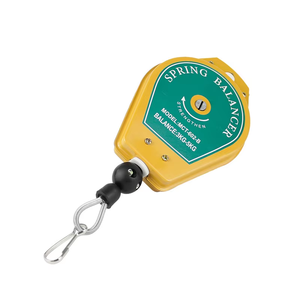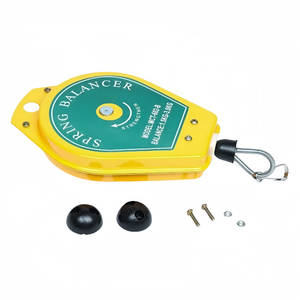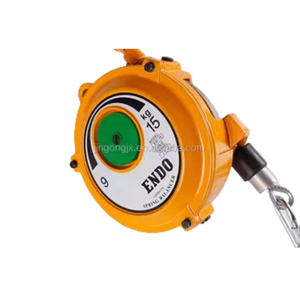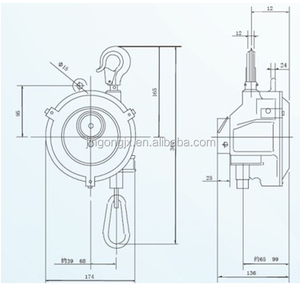
All categories
Featured selections
Trade Assurance
Buyer Central
Help Center
Get the app
Become a supplier

(3500 products available)

































There are several tool types and hardware, each serving a unique purpose and function. Many of these are commonly found and purchased in bulk by manufacturers.
Below are the common types:
These are manually operated tools. In this category, one finds metal tape measures, which are as simple as a folded steel belt into a reel and housed in a plastic casing. Hammer hand pulls are also considered hand tools; these small tools are used to gently pull back springs. Screwdrivers are also part of this category, which are small notched metal blades to turn screws by hand.
Unlike hand tools, power tools use an external source of power to operate. This category includes products like pneumatic tape pulls, which are powerful air-pressured tools used to pull tapes. Electric and battery-operated screw pulls are other examples.
Fasteners play the critical role of holding together or joining equipment, tools, or structures. This includes tape measures, spring balancers, and screws. On the other hand, anchors are used to provide support to elements within a structure. Some of the common examples include wall plugs and expansion anchors.
These are tools that are designed for use in tough environments and are commonly found in situations where the demands are considerably higher than usual. Examples include pneumatic and hydraulic tools.
These are tools whose measurements need to be accurate and exact. Such tools include calipers, micrometers, and gauges.
Gardening tools are hardware used for gardening and landscaping. They help manage vegetation, soil, and other aspects of gardening. Some of the common examples include shovels and rakes.
The tools and hardware industry is, however, broad and serves different industry sectors.
Below are the common tools and hardware industry applications:
Tools and hardware in this industry are applied in building infrastructures such as roads, houses, and bridges. The most common examples are power tools, fasteners, and heavy-duty tools.
Tools and hardware in manufacturing are commonly used in processes like assembly, fabrication, and quality control. Examples are precision tools, fasteners, and heavy-duty hardware.
One of the most common applications of tools and hardware in the automotive field is the repairs and maintenance of the vehicles. They are also used during the production process and in quality and safety checks. Power tools, fasteners, and diagnostic tool soft hardware examples.
Tools and hardware in this space are used in the aircraft production process and quality control. They are also used in the maintenance and repair of the aircraft. The most common examples are precision tools, fasteners, and heavy-duty hardware.
In the energy sector, tools and hardware apply to the installation and maintenance of equipment in the oil, gas, and renewable energy sectors. For instance, they monitor and evaluate energy systems with diagnostic tools.
They are used in the healthcare industry to maintain and repair medical tools and equipment. For instance, quality control in medical devices makes use of precision hardware and tools.
In this space, tools and hardware are applied in manufacturing processes like assembling circuit boards and performing repairs. They are also used in quality assurance. For instance, spring testers are used to check the strength of PCBs.
People do-it-themselves apply tools and hardware to make home improvements, repairs, and a general increase in the practical aspects of their living environment. Hand tools, power tools, fasteners, and anchors are examples of hardware in this space.
The installation process usually depends on the type of spring in question and the application it is intended for. Below are the general steps on how to install and use tools and hardware.
Assessing the requirements involves determining the load and space constraints and identifying the type of spring needed. The mounting points, which act as the spring's anchor, should be made to accommodate the spring.
Next, the spring should be positioned on the mounting points. If compression springs are involved, the spring should be compressed to fit into the designated spaces. On the other hand, extension springs should be attached to the open hooks.
The next step is securing the spring. After positioning the spring, ensure it is securely fixed to prevent any unwanted movement. The spring ends can be welded, hooked, or attached, depending on the design.
The load should then be tested by gradually applying the intended load. This ensures that the spring and hardware are working as they should.
Lastly, periodic checks are done to check for signs of wear, tear, or fatigue. This step ensures that only hardware in optimal condition is in use. Check for rust, corrosion, and physical damage.
The application the spring will be applied to, the load capacity, the environment, and the speed control are all important factors to consider when selecting a spring.
Yes, spring tool balancers increase the safety of a working environment. This is effectively illustrated by their ability to reduce how much strain and fatigue a worker experiences. Tool holders are also used to organize tools in a workspace. They keep the tools close to where they are needed and easily accessible.
The frequency of inspection depends on the tool's usage and operating environment. Tools in corrosive or humid environments may need daily inspection.
Finishing a spring is important in tools and hardware because it protects the spring from environmental elements. This includes rust, corrosion, and weather conditions, which cause debris accumulation.
Regular cleaning, lubrication with a proper fluid, and inspection of the spring and housing are some of the ways to maintain the spring tool balancer.